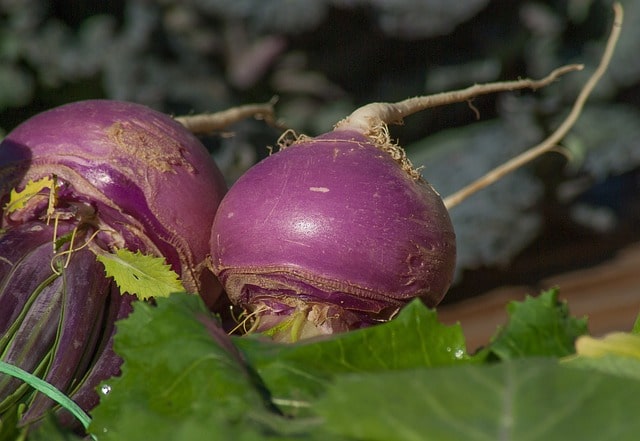When to Plant Turnips and Radishes for Deer
Deer hunters and wildlife enthusiasts can enhance their property and attract more deer by strategically planting turnips and radishes. Understanding when to plant these beneficial food sources is crucial to providing deer with the necessary nutrition and also having a successful hunting season. In this blog post, we will discuss the optimal timing for planting turnips and radishes to accommodate the needs of deer throughout the different seasons.
Why Plant Turnips and Radishes for Deer?
Turnips and radishes offer numerous benefits to deer and the wildlife habitat, making them popular choices among property owners looking to improve habitat quality and overall deer health. These root vegetables are high in essential nutrients such as carbohydrates and protein, which are crucial for deer during critical periods like the rut and winter months. Additionally, turnips and radishes help improve soil health and prevent erosion, making them an ecologically sound choice for land management.
Planting turnips and radishes can help attract deer throughout the year, providing them with an excellent food source that is both nutritious and easily digestible. Timing your planting efforts correctly can maximize the benefits these crops offer, ensuring that deer have access to quality forage when they need it the most.
Factors to Consider When Deciding When to Plant Turnips and Radishes
Determining the optimal planting time for turnips and radishes requires consideration of several key factors. Climate plays a pivotal role, as these crops thrive in cooler temperatures and can be damaged by excessive heat. Additionally, understanding the growth cycle of these vegetables is crucial. Both turnips and radishes need a certain amount of time to mature, and planting them too late in the season can result in a crop that’s underdeveloped by the time winter arrives.
Soil conditions also merit attention. These root vegetables do best in well-drained, fertile soil with a neutral pH. Testing your soil and making necessary adjustments before planting will greatly increase your chances of a successful crop. Lastly, considering the local deer population and their feeding patterns can help in timing your planting to ensure that your turnips and radishes are ready when deer are most in need of food sources.
Understanding the Benefits of Turnips and Radishes for Deer
The benefits of incorporating turnips and radishes into your wildlife feeding plan cannot be overstated. These root vegetables are not only easy to grow but also resilient, making them suitable for a wide range of climates and soil types. Turnips and radishes germinate quickly, and their rapid growth rate allows them to become available to deer sooner than many other food plot options. Moreover, these plants can survive frost, providing a food source that lasts well into the winter months when deer need it most.
Turnips offer a dual-purpose benefit as both their roots and greens are edible for deer, ensuring nothing goes to waste. The greens are high in protein, while the roots are a good source of carbohydrates, making turnips an all-around excellent dietary supplement for deer. Radishes, on the other hand, have a deep taproot that can break through tough soil, improving its quality and making it easier for other plants to grow. This characteristic makes radishes an excellent choice for not only feeding deer but also enhancing soil health and biodiversity on your property.
The Best Time to Plant Turnips and Radishes for Deer
After thorough research and personal experience, I’ve found that the ideal time to plant turnips and radishes for deer is late summer to early fall. This timeframe allows the plants to establish themselves and mature before the first frost, which is crucial for their development. In most regions, aiming for a planting window around August to September provides the best results. This period gives turnips and radishes enough time to grow to a size that can support deer nutritional needs throughout the fall and into the winter.
It’s important to monitor local weather patterns and adjust your planting schedule accordingly. If an unusually warm fall is expected, delaying planting by a few weeks can prevent premature bolting or flowering, which would reduce the nutritional value and palatability of the plants for deer. Conversely, in cooler climates, planting slightly earlier may be necessary to ensure the crops have enough time to mature before the first frost.
Preparing the Soil for Planting Turnips and Radishes
Successful cultivation of turnips and radishes begins with soil preparation. The first step involves testing the soil to determine its pH and nutrient levels. These root vegetables prefer a pH of around 6.0 to 7.0. If your soil is too acidic or alkaline, amendments such as lime or sulfur can be added to adjust the pH levels. Incorporating organic matter like compost or well-rotted manure can improve soil fertility and structure, promoting healthier growth and higher yields.
Tilling the soil to a depth of at least 8-10 inches is recommended to ensure that it is loose and aerated. This process helps to break up any compacted layers, allowing roots to penetrate deeply and access water and nutrients more effectively. Removing rocks, roots, and other debris from the planting area also facilitates better growth conditions for turnips and radishes.
Planting Techniques for Turnips and Radishes
When it comes to planting turnips and radishes, precision and care are key. These crops can be sown directly into the prepared soil, eliminating the need for transplanting. Creating rows that are spaced about 12 inches apart can optimize growth and yield. Seeds should be planted at a depth of approximately ½ inch for radishes and ¼ inch for turnips, lightly covered with soil, and watered gently to encourage germination.
It is beneficial to practice thinning once the seedlings have emerged and are about 2 inches tall. This involves removing some plants to allow the remaining ones enough space to grow. For turnips, a spacing of 4-6 inches between plants is ideal, while radishes can be spaced closer, at about 2-3 inches apart. Thinning reduces competition for resources and results in healthier, more robust vegetables.
Caring for Turnips and Radishes During the Growing Season
Throughout the growing season, maintaining a consistent watering schedule is crucial for the development of turnips and radishes. These plants require a steady supply of moisture, especially during dry spells, to prevent the roots from becoming woody and bitter. However, overwatering can lead to root rot and other diseases, so ensuring proper soil drainage is equally important.
Regular weeding is necessary to keep the planting area free from competition, which could otherwise stunt the growth of your turnips and radishes. Mulching around the plants can help retain soil moisture, regulate temperature, and suppress weed growth. Additionally, a balanced fertilizer can be applied midway through the growing season to provide an extra boost of nutrients, promoting fuller, healthier root development.
Harvesting Turnips and Radishes for Deer
The moment of harvesting marks the culmination of your efforts to provide a nutritious food source for local deer populations. Turnips and radishes are generally ready to harvest within 60 to 70 days after planting, depending on the variety and growing conditions. The roots should be firm and plump, with turnips typically reaching a diameter of 2-3 inches and radishes being slightly smaller.
For the best quality and taste, harvesting in the early morning when the soil is cool is advisable. This timing helps to ensure that the roots retain their moisture and crisp texture. After harvesting, the vegetables can be left in the field for deer to find and consume. Alternatively, they can be collected and distributed in feeding areas to attract deer to specific locations on your property.
Tips for a Successful Turnip and Radish Harvest
Achieving a successful harvest requires attention to detail and a willingness to adapt to the needs of your crops. One key tip is to rotate your planting areas each year to prevent soil depletion and reduce the risk of disease. Additionally, selecting varieties of turnips and radishes that are known to be hardy and resistant to pests can minimize potential problems during the growing season.
Observing the behavior and preferences of the local deer population can also provide valuable insights into how best to manage your turnip and radish garden. Some deer may prefer the greens over the roots, or vice versa, and adjusting your planting accordingly can enhance the attractiveness of your food plot. Finally, engaging with a community of fellow gardeners and wildlife enthusiasts can offer support, advice, and shared experiences that enrich your own gardening journey.
Seasonal Considerations for Planting Turnips and Radishes
Spring Planting
Location: Choose a sunny location with well-drained soil for planting turnips and radishes in the spring.
Timing: Early spring is ideal for planting turnips and radishes, typically in March or early April depending on your region.
Soil Preparation: Ensure the soil is adequately tilled and free of weeds before planting.
Seeding: Plant turnip and radish seeds at the recommended depth and spacing according to the seed packet instructions.
Maintenance: Keep the soil moist and weed-free to promote healthy growth.
Summer Maintenance
Growth Stage: Monitor the growth of your turnips and radishes throughout the summer months.
Watering: Provide supplemental watering during dry periods to support plant growth.
Weed Control: Regularly remove weeds to prevent competition for nutrients.
Fall Planting
Preparation: Assess the condition of your food plots and prepare them for fall planting.
Timing: Late summer or early fall is the best time to plant turnips and radishes for fall crops.
Species Selection: Consider planting a mix of turnips and radishes to provide a variety of forage options.
Establishment: Ensure good seed-to-soil contact and consider using a seed drill for optimal planting depth.
Growth expectations: Expect an accelerated growth rate in the cooler fall months, providing ample forage for deer.
Conclusion and Final Thoughts
The cultivation of turnips and radishes for deer is more than just a gardening endeavor; it’s a contribution to the local ecosystem and a way to promote healthier, more sustainable wildlife populations. This guide has provided a comprehensive overview of the process, from understanding the benefits of these vegetables for deer to the intricacies of planting, caring for, and harvesting your crops. By following the best practices outlined here, you can create a thriving garden that serves as a valuable food source for deer throughout the fall and winter months.
As with any gardening project, patience, perseverance, and a passion for nature are key to success. The rewards of watching deer enjoy the fruits of your labor are immeasurable, offering a sense of fulfillment and connection to the natural world that is truly unique. Whether you are a seasoned gardener or a novice eager to contribute to wildlife management efforts, the journey of planting turnips and radishes for deer is one that promises both challenges and joys. Embrace the process, learn from each season, and continue to refine your approach for even greater success in the future.


Trackbacks/Pingbacks